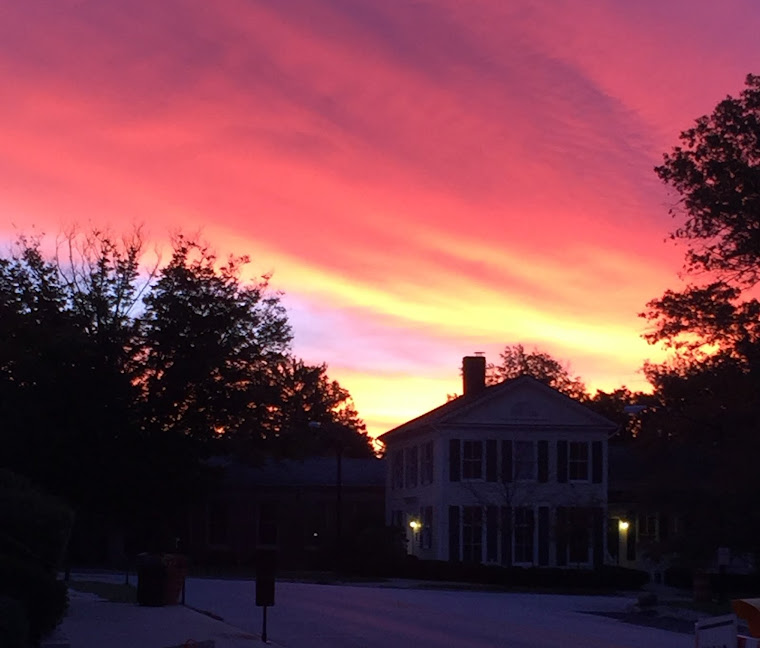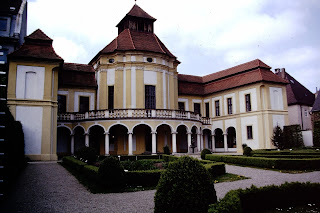1.
AOTW: In a coffee shop--not ten feet away from me--a group of young people are talking loudly about "old people" and how clueless they are about smart phones. They brag about the latest versions of phones
they have, laugh some more about "old-guy phones." A wee message for these
AsOTW: Some old guys have ears that still work.
2. This week I finished Michael Harvey's most recent detective novel,
The Governor's Wife, a 2015 novel, once again featuring Chicago PI Michael Kelly. I can't really remember when I first started reading Harvey--he's not, I don't think, a name widely known, except among detective-fiction fans. But once I read one of his novels, that was
it. I quickly read them all--and now wait (impatiently) for each new one to arrive.

The first was
The Chicago Way (2007), and that was the one that hooked me. I just checked my journal for 2010 and saw this little Harvey-related entry for July 23, 2010:
... finished
novel on Kindle (Harvey’s The Fifth Floor;
I’d read his The Chicago Way earlier)
So--a clue! (Michael Kelly would be proud.) I checked my Amazon Kindle purchases and saw that I bought
The Chicago Way on June 18, 2010. And on the 19th I wrote in my journal
read
some of new novel in Kindle
I know why I didn't name it: When I was writing the entry, I couldn't remember, and I was too lazy to look it up on my Kindle. There you go. (The next day, I
did mention the title!)
Anyway, the new one ... An anonymous client hires Kelly to find out what really happened to the former Illinois governor, who mysteriously (and impossibly) disappeared on his way out of a Chicago court house after being convicted and sentenced for corruption. Vanished somehow. The client says he/she will deposit $100K in an account for him. (Not a bad rate.)
Anyway, Kelly dives in, finds some unpleasant submarine creatures, employs a little violence, endures a little pain, etc. Good contemporary example of the tough-guy PI novels from an earlier era.

3. A weird word-coincidence this week. A few days ago, the word-of-the-day from
The Oxford English Dictionary was
pogonic (of, or relating to, a beard). Okay. I got a laugh out of that one. Then, yesterday, came some spam in my email using the word
pognophobiac (one who fears beards), part of an ad for razors on what the site called No Beard Day.
4. This weekend Joyce and I saw the new Steven Spielberg film,
Bridge of Spies (
link to the trailer), a film based on the Gary Powers U-2 spy plane incident from May 1, 1960 (near the end of Eisenhower's 2nd term; I was a sophomore at Hiram High School--and remember the incident well). The film had Spielberg's usual superb story-telling with his usual sentimentality. An amazing performance by Mark Rylance, the much-honored English Shakespearean actor, who played Soviet spy (in America) Rudolf Abel, whom we traded to the Soviets for Powers.(
Link to historical info about the incident.) Photo shows Rylance with Tom Hanks, Our Hero in the film (a lawyer who negotiated the exchange). Film brought back a lot of the paranoia (some of which was justified) about imminent nuclear war in the late 1950s and early 1960s.
5. But the Big Excitement this week came on Thursday evening: seeing Benedict Cumberbatch play Hamlet in a live Fathom event (streamed from a production at the Barbican Theatre in London) at the new Cinemark Theater in Cuyahoga Falls (lovely facility; one definition of a "lovely facility" for a 70-something guy: lots of big public restrooms ... just saying). (
Link to the play's website.)
As I mentioned on Facebook on Friday, Cumberbatch was outstanding--the best Hamlet I've ever seen. By far. (And I've seen
lots of them. Well, maybe one was better: my former Aurora Middle School student John Mlinek, who played the melancholy Dane at KSU in the early 1970s!)
He found all the humor, all the distress, all the anger and pain and madness in the role. Every line emerged from his mouth with an invisible Post-It note:
I know exactly what this means, and because I do, you will too. And so we did.
I was also very surprised by his vigor and physical grace--and not just where you'd expect (in the fencing match with Laertes): He was all
over that stage--running up and down stairs, hopping on tables. I'd never seen him in Full-Athletic Mode, but he was
something.
I wish I could say the same for the rest of the production. The worst Horatio I've ever seen (I don't know
what the director was thinking), the worst Ophelia (couldn't wait for her to drown), a very weak Claudius, only a decent Gertrude. Laertes was awful. And I
hate it when they make Polonius a total buffoon (as they did in this production). He cares for his children, worries about them. As a parent, I can say: That is not buffoonery; that is love. I wished the Ghost had stayed away.
Speaking of which: This production did
not begin with the guards seeing the ghost. Instead, we see Hamlet listening to a record on a turntable, like some kind of 50s teen whose prom date just dumped him. I hated that, too. I want the guards, the Ghost, the bitter air, etc.
I will credit director Lyndsay Turner with some deft handling of some ... problems ... in the script. In the standard version of the play, Hamlet greets the players as they arrive at Elsinore, asks them if they can play
The Murder of Gonzago, if they can insert a few lines for him in the script. Then,
later, in his "O what a rogue and peasant slave am I" monologue, he seems to first
get the idea to "catch" the King by performing a play. Turner did some switching around to make the two bits fit more sensibly together.
One other example: In most productions, the Queen comes in to tell Claudius and Laertes, Ophelia's brother, that the poor young woman has drowned. And we wonder: Where did she get all the
detail about it? And why didn't someone who had the time to see the branch break, to see Ophelia floating in the stream, her dress spreading out, getting too heavy, pulling her down--why didn't that person
rescue her?
In this production, the Queen follows Ophelia--even runs after her--when she leaves at the end of her final mad scene. (But the question remains, of course: If Gertrude
saw all that, why didn't
she rescue the girl?) I still think Gertrude probably made up all those details--soft details to calm Laertes--after someone brought her what was surely a more grim and grisly report of what had happened.
There were some others.
The director gave lines to surprising people (Osric has no part here; one of the courtiers we met earlier says Osric's lines at the end); they seem to have cut the line "Rosencrantz and Guildenstern are dead"--a notable line because of the Tom Stoppard play with that title; numerous other lines were cut or moved around (almost always done with
Hamlet).
The setting was 20th century (we see handguns), and after the intermission, we see they have strewn the stage with rubble inside Elsinore--a sign of implosion and decay and collapse, I guess, but I found it superfluous. Even annoying.
But Cumberbatch? A Hamlet for our time, that's for sure. Intelligent, emotional, witty, mercurial, athletic--Cumberbatch displayed all of these traits and more with supreme control and artistry.
 The Kingmans were also avid collectors and had all sorts of goodies hanging on the walls--and for sale. Among them--the larger of the two items I framed. It's the November 4, 1906, issue of the Boston Sunday Post's Sunday Magazine, and on the cover is featured a recent Jack London story, "The White Man's Way,"one of his Northland stories; it would later appear in his collection Love of Life (1907). It seems that London originally sold the story to the Sunday Magazine of the New York Tribune (appearing also in Nov. 1906), and the Boston Post seems to have piggybacked. As did a paper in St. Louis. Probably others. He got $530 for it. (Link to the story.)
The Kingmans were also avid collectors and had all sorts of goodies hanging on the walls--and for sale. Among them--the larger of the two items I framed. It's the November 4, 1906, issue of the Boston Sunday Post's Sunday Magazine, and on the cover is featured a recent Jack London story, "The White Man's Way,"one of his Northland stories; it would later appear in his collection Love of Life (1907). It seems that London originally sold the story to the Sunday Magazine of the New York Tribune (appearing also in Nov. 1906), and the Boston Post seems to have piggybacked. As did a paper in St. Louis. Probably others. He got $530 for it. (Link to the story.)














































